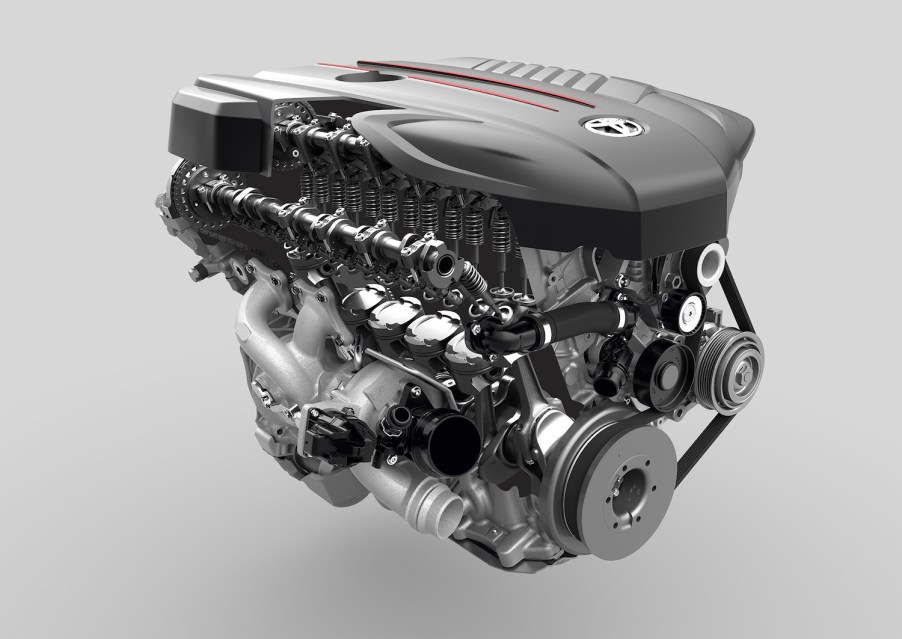
Here’s Why the Straight-Six (I6) Engine is Making a Comeback
The V6 engine is much more popular than the inline six-cylinder (I6) engine. Both layouts have pros and cons, but a turbocharged I6 makes a better V8-replacement in front-engine, RWD vehicles. This is why–as gas-guzzling V8s fade away–the straight-six engine is making a comeback.
Do straight six engines make more torque?
One common myth is that an inline engine makes more torque than its V-shaped counterparts. But the truth is that engine torque is a product of displacement and RPM–it has nothing to do with engine length or layout. The trusty inline six-cylinder does offer some benefits a V6 does not.

Firstly, the layout of an I6–often called a straight-six–makes it inherently more balanced than a V6. Not to get overly technical, but the pistons of an I6 engine can move in pairs, balancing each other’s weight. A V6, on the other hand, will suffer more vibration the higher its RPM climbs. Engineers build counterweights into the mainshaft of modern V-shaped engines, but this solution is far from perfect. Future I6 engines will likely have a higher redline than the V6s and V8s they replace.
Secondly, an I6 engine’s length disqualifies it from front-wheel-drive cars. But if an automaker can fit an I6 in a front-engine, RWD car it is rewarded with ample room along both sides of the engine bay. This space is ideal for turbochargers or other such performance additions. It also gives mechanics plenty of room to work in the engine bay.
Finally, a straight-six engine has fewer moving parts than its V6 counterparts. A V-shaped double overhead camshaft (DOHC) engine actually needs two camshafts for each cylinder bank. In addition, it needs a very long timing chain to drive all four of these camshafts. It must have two cylinder heads, each with its own set of valves and head gasket. Overall a V-shaped engine will simply have more moving parts.
Which automakers are building inline six-cylinder engines?
Mazda and Mercedes are both developing a next-generation turbocharged straight-six engine. Even Dodge–the brand built on supercharged V8s–will soon be tossing its V-shaped engines for an all-new I6. BMW and Toyota collaborated on a turbocharged I6 you can get in either a Toyota Supra or a BMW M3. Finally, Land Rover and Jaguar offer a series of I6s called the Ingenium family.

The age of the straight-six engine has returned. According to the Cars Guide website, a range of automakers are working on new I6 engines that may appear in multiple brands. For example, the new Genesis GV80 SUV’s diesel I6 engine may do duty in Hyundai and Kia vehicles. Mazda is already in talks to share its upcoming diesel/gasoline compression I6 with Toyota and Lexus.
Stellantis is the result of a merger between Fiat Chrysler Automobiles and Peugeot Group and is one of the world’s largest automakers. The company made headlines when it announced a twin-turbocharged straight-six “Hurricane” engine would eventually replace the V8 engines–even in its Ram and Dodge vehicles. The Jeep-built Wagoneer SUV will be the only 2023 vehicle with this new 3.0-liter twin-turbocharged I6, but we expect to see it in the future of many Stellantis brands.
Why is the straight-six is making a comeback now?
There are many reasons the inline six-cylinder engine is on the up-and-up. As automakers perfect high output, small displacement engines, an I6 can power a modern truck or sportscar. This is thanks to variable valve and turbocharger technology. The I6 leaves room for this extra equipment that many V-shaped engines don’t.

The I6 engine is too long for a FWD vehicle, but there is surging interest in front-engine, RWD sports cars. The I6 is a perfect engine for these applications.
The nimble I4 has become the default engine for vehicles of many shapes and sizes. Automakers can–and do–leverage technology used in their I4 engines to build an I6. One example is electronic oil and water pumps which allow an I4–or an I6–to fit into a smaller engine bay.
Next, see Stellantis’ Hurricane I6 by the numbers or see some of the straight-six engines currently available:



